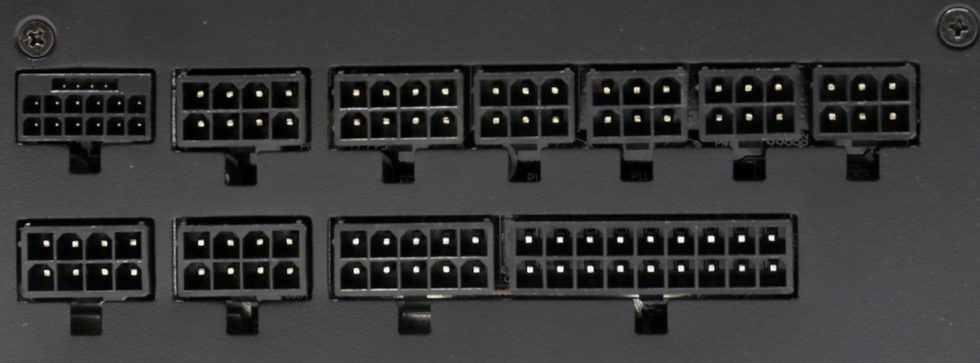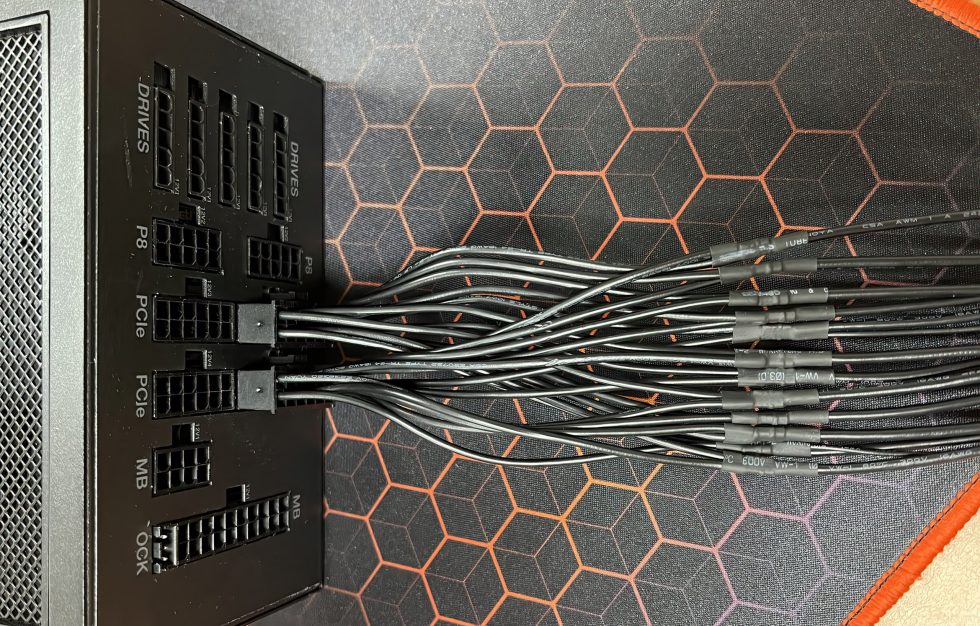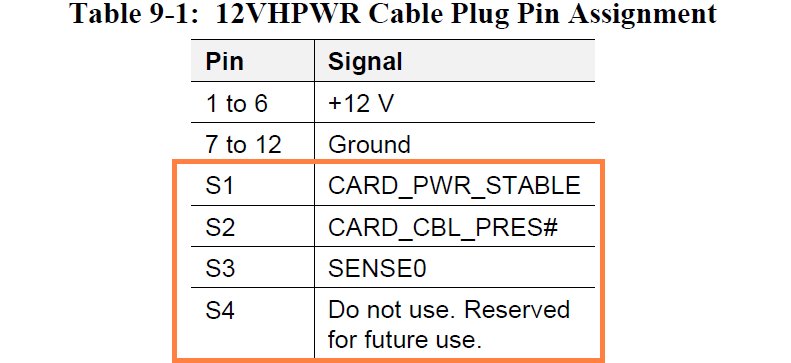First of all, we need to separate the terms and standards before we should even think about buying a new ATX 3.0 power supply. And to bring it right at the beginning times to the point: Panic buying is completely out of place and more or less intentional marketing! Or to put it more casually: in principle, no one needs the whole thing yet. However, I must also note, then there can be different situations for a purchase decision. That’s where it gets interesting, though. By the way, I had already published some parts of today’s article, spread across older articles – but you now have to compare the whole thing with the real existing graphics cards including measured values again and completely re-evaluate it. And neither Ada nor RDNA3 are PCIe 5.0 graphics cards.

PCIe 5.0 is still in the stars for the PSU
What interests us at the power company in terms of PCIe 5.0 is solely the new 12VHPWR supply connector, which is supposed to make the tiresome multiple adapter obsolete. Unfortunately, the current implementations are very “ready”, but they don’t offer anything new except for the two sense pins for the power consumption. Because the other two signals require completely new power supply designs, because it’s actually supposed to come down to smart communication. This is something that neither the current power supplies can offer (even those with the current PCIe 5.0 “Ready” label) nor the current graphics cards! At least the PCI SIG has left the two additional pins optional, which is complete nonsense. After all, a little pregnant does not work in the end.
The S4 (i.e. the outer pin) is supposed to finally get its own function officially in the next revision (after they also move the pins further back into the connector to log a secure engagement). This will then look like that the graphics card (as already implemented now) does not start at all on its own, should the ground connection be missing here. Pure cosmetics, because that’s what Pin S2 was actually intended for. Stupidly, this important function is completely missing so far. On the graphics card and power supply sides. But I will come to that in a moment. Ergo, the whole PCIe 5.0 readiness story is only a farce at this point.
What is actually missing? Almost everything!
The still missing pin S2 for CARD_CBL_PRES would have even two functions. According to the standard, the graphics card first sends a signal to the power supply that it has recognized that the power plug is connected correctly. Do you notice anything? This control function should actually ensure that a safe plugging in should be guaranteed! However, since all this has been generously omitted for backward compatibility reasons so far, we don’t have to wonder about defective 12VHPWR plugs either.
In addition, the power supply provides a signal to the graphics card that it has been detected as a consumer and this current state of readiness is passed to the Power Budgeting Sense Detect Register5. This is used to allow the system to map which system/power cable source is connected to which port on a particular PCIe card slot. Currently missing on all graphics cards, power supplies as well as motherboards.
Pin S1 for CARD_PWR_STABLE, which is also generously skipped, serves as an independent indicator for the proper state of the power supply from the graphics card, via the cable, to the power supply. Activation of this signal on the graphics board indicates that the local busbars are within their operating limits (monitoring of ongoing operation!). This signal can provide the power supply with error detection from the graphics card and provides the power supply with an additional means of protection. Currently missing on all graphics cards and in all power supplies.

Fact is: it currently makes no sense at all to rely on a native 12VHPWR plug on the power supply (cable picture above)! Because it can’t offer anything else than the same (limited) functionality that a normal accessory cable of the power supply manufacturer from 2x 8-pin (or 2x 12 pin) to the 12VHPWR on the graphics card side does! On the contrary, the thin 12VHPWR connector in the power supply is the next failure candidate for melting connections due to the limited bending radii and operating safety. One has actually only disadvantages with this part at the moment!

If you look at the following picture, where the sleeve has been removed, you can see two 12-pin connectors with very flexible 18AWG cable at be quiet, where the 24 cables were only crimped together after a few centimeters to the 12 thick 16AWG cables. This solution is also available simpler with 2x 8-pin (6 cables used each) without merging. Personally, I also prefer this three times over the 12VHPWR on the power supply in the tight space available.

Conclusion: PCIe 5.0 on the power supplies and graphics cards is still a sham
If we look at what has been said so far, we conclude that everything that is currently offered as PCIe 5.0 compatible is actually nothing more than old iron with a new connector on the power supply. But it actually gets worse, because the glut of power supplies equipped with a 12VHPWR cable and marketed as PCIe 5.0 “Ready” or “Compliant” is already rapidly increasing, so the lines will become more and more blurred here.
How these 12VHPWR cables are then connected to the power supply is currently completely irrelevant, because only the two well-known sense pins are occupied anyway. That, which would make the connection really smart, is completely missing on all graphics cards and also in the announced new power supplies. It simply does not need anyone at the moment! The PCI SIG’s intentionally built in loophole to generally only handle the two smart pins as optional then makes this “standard” completely obsolete for the user. Transparent is different.
For reasons of better manageability, I would rather go for a good ATX 2.52 (and higher) power supply, which either comes with the 12VHPWR cable as an accessory or whose manufacturer offers such a cable as an option. Thus, this power supply is no longer different from the ATX 3.0 power supplies with PCIe 5.0 “compatibility” that are now coming out. What then makes (or should make) the part with ATX 3.0, you can read on the next page.

































97 Antworten
Kommentar
Lade neue Kommentare
Veteran
Urgestein
Urgestein
Urgestein
Urgestein
Veteran
1
Urgestein
1
Urgestein
Veteran
Veteran
Mitglied
Mitglied
Mitglied
Mitglied
Veteran
Mitglied
Urgestein
Alle Kommentare lesen unter igor´sLAB Community →